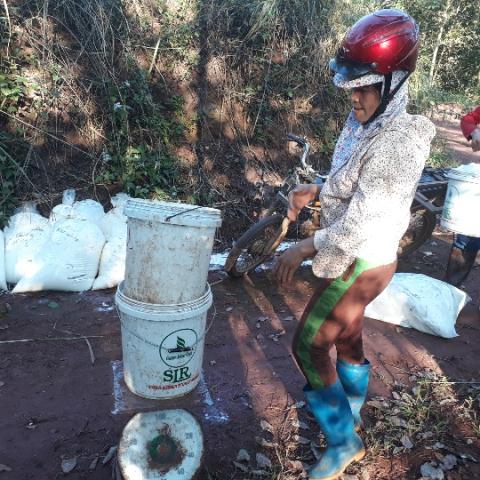[ad_1]

Son La’s people rushed to grow rubber
Lo Van Cuong, deputy head of Ca hamlet of Quynh Nhai district, told reporters that if he could make decision again, he would not grow rubber.
“We contributed 1.6 hectares of land to grow rubber and I officially became a latex exploitation worker. However, I only work 10 days a month and receive VND600,000 only,” he said.
“With the income, I cannot earn enough money to feed my family. In the past, I cultivated cassava on the land and got income high enough for my family members,” he complained.
Ca Thi Muon, a resident of Ca hamlet, said that local people are ‘hovering between life and death’ because of rubber plants.
The investors, who persuaded people to contribute land to grow rubber, reassured them that rubber would help locals escape poverty because rubber is considered ‘white gold’. They also said that the rubber plants would give latex after 6-7 years.
|
The investors, who persuaded people to contribute land to grow rubber, reassured them that rubber would help locals escape poverty because rubber is considered ‘white gold’. They also said that the rubber plants would give latex after 6-7 years. |
Nguyen Ngoc Lung, Director of Institute for Sustainable Forest Management and Forest Certification, said scientists warned about the risks of developing rubber plants in the northwestern part of the country,
They also warned that once people contributed land to grow rubber, production materials would no longer exist. As they have no more land for their livelihoods, encroachment on forestland would occur.
“However, ignoring the warnings about losses, investors and people still rushed to develop rubber plantations. This was a strong movement which scientists could not prevent,” Lung said.
At that time, Lung was director of the Forestry Department. However, he could do nothing except watch people chop down forests to make room for rubber trees.
Those who once persuaded people in the northwest to grow rubber have realized that they made a blunder.
With the output of one ton per hectare, businesses will break even only if the selling price is equal to the price at the time they began cultivation.
If the output is less than one ton per hectare, businesses will take a loss. Meanwhile, the rubber price has been falling in the world market, while the output in the northwest is below expectations.
Problems have also occurred with latex quality. If rubber plants cannot grow on land with suitable conditions, the latex will be weak or contain impurities which need to be removed during processing.
RELATED NEWS
Natural rubber market struggles
Shortage of local raw rubber material
Mai Chi
[ad_2]
Source link
